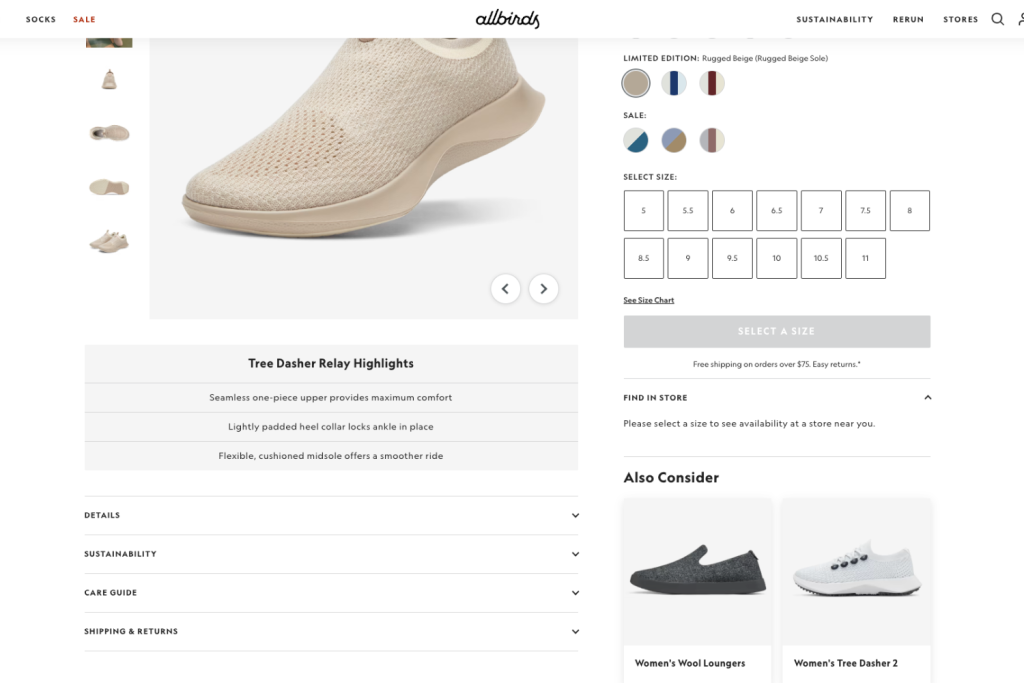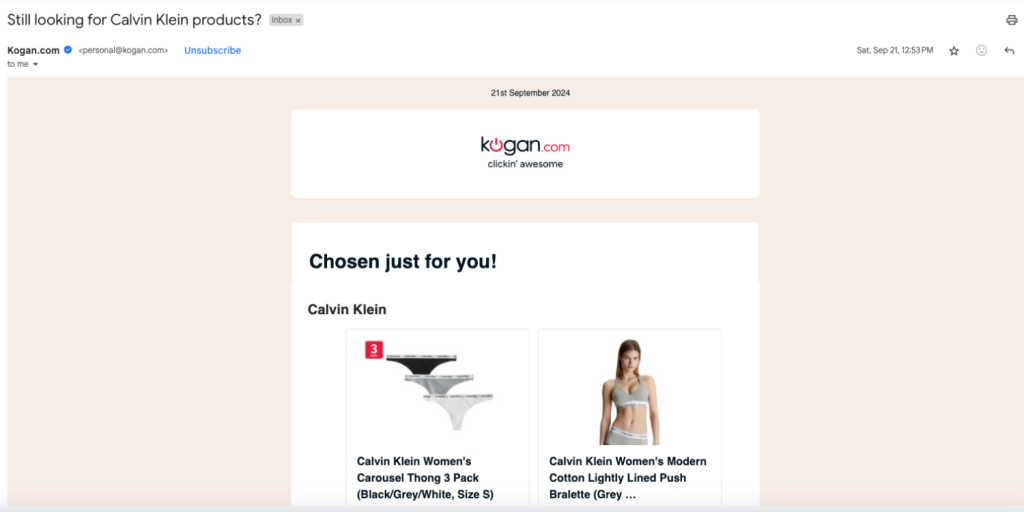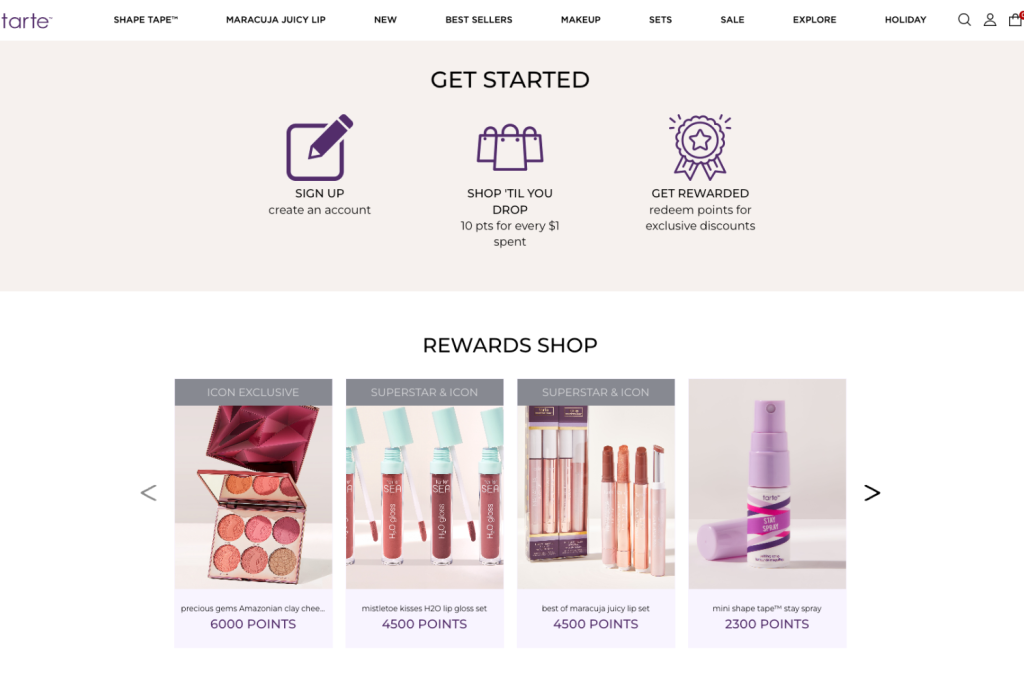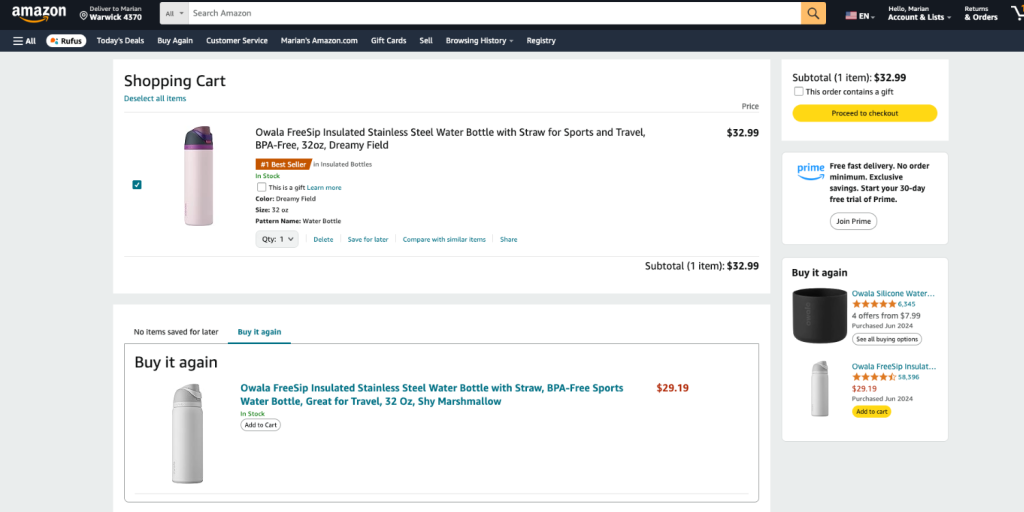Customer experience personalization is a game-changer in ecommerce, helping you stand out from competitors and make each customer feel truly valued. By optimizing your customer experience through journey mapping and personalized experiences, you can collect data and better understand your customers, improving customer satisfaction and retention.
Implementing digital experience platforms and running A/B tests allows businesses to continuously optimize customer interactions, increasing conversion rates and customer lifetime value. Let’s dig deeper into how customer experience optimization can boost brand loyalty and elevate your business strategy.
What is customer experience personalization?
With customer experience personalization, the clue is in the name. It’s about using customer data to craft personalized experiences that resonate with each customer, optimizing their journey from start to finish.
By collecting data and implementing a customer experience strategy, you can enhance customer satisfaction and retention. This approach not only grabs attention but also increases conversion rates and average order value. As you continuously improve the customer journey, you’ll see a boost in brand loyalty and customer lifetime value, making your digital experience optimization efforts truly worthwhile.
According to research from Forrester, 77% of consumers have either recommended, paid more for, or chosen a brand that offers a personalized service or experience. Similarly, Salesforce’s research shows that personalized offerings are attractive to 74% of Gen Zers, 67% of Millennials, 61% of Gen Xers, and 57% of Baby Boomers. This indicates that personalization is increasingly becoming an expectation of customers across different age groups.
To personalize the customer experience, businesses can use various data points such as past purchases, browsing behavior, location, language, and demographic information. Accenture’s research reveals that 83% of consumers are willing to share their data to create a more personalized experience. Therefore, businesses must collect and use customer data responsibly to provide tailored experiences that align with the customer journey. By optimizing customer experiences through digital experience platforms and journey mapping, businesses can improve customer satisfaction, build brand loyalty, and increase conversion rates. This ongoing process not only drives revenue growth but also enhances the overall brand experience.
Different types of ecommerce personalization
There are many different types of ecommerce personalization, which means finding the right one for your customer might take some trial and error. However, getting it right can mean more sales and a better customer experience optimized for your audience. By leveraging customer data and journey mapping, you can run experiments to understand customers better and refine your approach. As you continuously optimize the customer experience through various personalization techniques, you’ll see increased conversion rates, brand loyalty, and customer lifetime value. Here are some of the most common types of ecommerce personalization your brand can try out:
Navigational personalization
This type of personalization uses customer data to suggest products or content that matches customer interests. By analyzing the customer journey and past purchases, businesses can optimize the customer experience. For instance, they might recommend products similar to those a customer has viewed or purchased. This approach improves customer satisfaction, increases conversion rates, and boosts average order value, ultimately enhancing brand loyalty and customer lifetime value.

Predictive personalization
This type of personalization uses machine learning to predict what a customer is likely to buy next. For example, a retailer might send an email with product recommendations based on past purchases. Wholefoods excels at this with their app, which sends offers and suggestions using customer data. The app’s algorithm tracks your most frequent grocery purchases, optimizing the customer experience by suggesting these and similar items the next time you shop. This approach enhances brand loyalty, increases conversion rates, and improves customer retention by delivering a personalized experience.
Third-party personalization
This type of personalization uses third-party data, like social media or search engines, to enhance the customer experience. For example, you might show products a customer’s friends have liked or purchased. By leveraging this data, businesses can optimize the customer journey, boost brand loyalty, and increase conversion rates through a more personalized experience.
Database personalization
This type of personalization uses customer data, like their name, email address, and purchase history, to create a more personalized experience. For example, a retailer might send a birthday email with a special offer. By collecting data and understanding your customers, you can optimize the customer journey and improve the customer experience. This approach boosts brand loyalty, increases conversion rates, and enhances customer retention, ultimately driving customer lifetime value.
Subject line personalization
This type of personalization uses customer data, like past purchase history or location, to tailor the subject line of an email. It’s one of the most common personalization strategies and is easy to set up with proper database segmentation and a solid email marketing service. For example, a retailer might send an email with a subject line that mentions products a customer has viewed or includes their name. This approach enhances the customer experience, boosts engagement, and increases conversion rates by optimizing the customer journey and improving customer satisfaction.

Offers personalization
This type of personalization uses customer data, like past purchase history or location, to tailor the offers they receive. For example, a retailer might offer a discount on a product the customer has previously viewed. By understanding your customers and optimizing the customer experience, businesses can improve customer retention and increase conversion rates. This strategy enhances brand loyalty and customer lifetime value by delivering a personalized experience that resonates with the customer base.
Messaging personalization
This type of personalization uses customer data, such as past purchase history or location, to tailor the messages they receive. For example, a retailer might send a customer a message with a link to a product they previously viewed. By optimizing customer experiences and leveraging user insights, businesses can improve customer satisfaction, boost conversion rates, and enhance brand loyalty. This personalized approach not only increases customer retention but also maximizes customer lifetime value, creating a more engaging digital experience.
Content personalization
This type of personalization uses customer data, such as past purchase history or location, to tailor the content they see. For example, a retailer might show different product recommendations based on a customer’s location. By understanding your customers and optimizing the customer journey, businesses can improve the customer experience and increase conversion rates. This approach also enhances customer satisfaction and brand loyalty, leading to a higher customer lifetime value and a more personalized experience.
Remarketing
This type of personalization involves showing ads to customers who have previously visited your website or app. For example, a retailer might display an ad for a product a customer previously viewed, similar to a remarketing ad from J. Crew Factory, where copy and imagery create urgency. Each type of personalization can improve the customer experience and increase conversion rates. By understanding your customers through journey mapping and collecting data, you can optimize the customer experience and create a more relevant, engaging shopping experience that enhances brand loyalty and customer lifetime value.
Why personalization is important to your business
We’ve already touched on some of the benefits of ecommerce personalization, but let’s go a little deeper into the benefits of ecommerce personalization.
- Increased customer satisfaction: Customers appreciate being treated like individuals, and personalization can help you create a more personalized and engaging shopping experience. 77% of customers demand a more personalized experience, according to Netcore.
- Increased sales: Personalization can help you increase sales by showing customers products they are more likely to be interested in.
- Improved customer retention: By providing personalized experiences, you can enhance customer retention by promoting engagement and encouraging repeat purchases.
- Reduced marketing costs: Personalization can help you reduce marketing costs by ensuring your marketing messages are more relevant to your target audience.
If you’re looking for ways to improve your ecommerce business, personalization is a great place to start. By understanding your customers and their needs, you can use personalization to create a more relevant and engaging shopping experience that will help you increase sales, improve customer satisfaction, and retain customers for the long term.
How to personalize your ecommerce store
Wondering how to get started with personalizing your ecommerce store? We’ve got you. Here’s how to make a move into ecommerce personalization.
Collect data about your customers.
Gather customer data like names, emails, purchase history, and browsing behavior to create detailed customer profiles and segment your audience effectively. These profiles help you understand customer needs and optimize the customer journey, enabling personalized experiences that boost conversion rates, brand loyalty, and customer lifetime value.
Personalize your website and marketing materials.
This could include product recommendations, targeted ads, and personalized emails. You’ll usually need to use third-party services or systems (for example MailChimp, Klaviyo, or Constant Contact for email marketing campaigns) to do the personalization. The good news is that most of these systems are super easy to use, and you can pretty much drag and drop to create personalized campaigns. You need to get your segmentation and data right for these campaigns to work properly.
Top Tip: To further enhance your personalization efforts, consider using Pixc: Shop Analyzer. This tool can help you analyze your store and optimize it for better customer experiences.
Use social media to connect with your customers.
This is a great way to learn more about your customers and their interests. You can start utilizing personalization through retargeting ads or individualized offers on social media. Social channels collect a ton of customer data, making automatic personalization easier for ecommerce stores. By understanding your customers and optimizing digital experiences, you can improve the customer journey, increase conversion rates, and boost customer retention.
Offer loyalty programs and rewards.
Expressing appreciation to your customers and encouraging repeat business can be achieved through loyalty programs and rewards. Collaborating with third-party tools makes it easier to optimize the customer experience and increase customer retention.

By understanding your customers and integrating these programs into your customer experience strategy, you can boost brand loyalty, improve customer satisfaction, and increase conversion rates, ultimately enhancing customer lifetime value.
Personalize your checkout process.
This could include offering different payment options, shipping methods, and return policies based on customer location or purchase history. Your store can usually detect location, making it easy to automate personalized emails that include customer names. This is a simple way to optimize the customer experience and create a personalized feel with minimal effort. By understanding your customers and leveraging customer data, you can improve customer satisfaction, increase conversion rates, and boost customer retention, all while enhancing your overall brand experience.

This could include offering different payment options, shipping methods, and return policies based on customer location or purchase history. Your store can usually detect location, making it easy to automate personalized emails that include customer names. This is a simple way to optimize the customer experience and create a personalized feel with minimal effort. By understanding your customers and leveraging customer data, you can improve customer satisfaction, increase conversion rates, and boost customer retention, all while enhancing your overall brand experience.
Personalize your customer support.
This could include offering live chat or phone support or providing personalized answers to frequently asked questions. Even saving the history of previous inquiries or linking it to your sales process can optimize the customer experience. While this approach requires more effort, it distinguishes your brand from competitors. By understanding your customers and using customer data, you can improve customer satisfaction and retention, creating a personalized experience that boosts brand loyalty and customer lifetime value. This strategy also enhances the overall customer journey, helping to increase conversion rates.
Personalize your shipping and delivery experience.
Customize your shipping and delivery process by offering features like free shipping, delivery tracking, and notification updates. Add a personalized touch by including customer names in automated emails or using local knowledge to provide relevant information. This approach enhances the customer experience and makes your service feel more tailored and thoughtful.
By understanding your customers and optimizing these touchpoints, you can create a more personalized ecommerce experience that improves customer satisfaction, increases conversion rates, and builds brand loyalty. Following these tips will help you increase customer lifetime value and strengthen your brand experience.
How to measure the impact of personalization marketing
If you’re incorporating personalized marketing into your ecommerce store, it’s crucial to ensure you’re getting results. A/B testing is essential when starting a campaign, along with understanding your starting point through journey mapping.
Measure where you stand before implementing personalization, and familiarize yourself with your analytics platform to set a benchmark. Here are the metrics to measure the impact of your personalized experience optimization efforts:
- Conversion rate: This is the percentage of visitors who take a desired action in your store, such as purchasing or signing up for a newsletter.
- Average order value: This is the average amount of money that each customer spends when they make a purchase.
- Customer lifetime value: This is the total amount of money a customer is expected to spend with your business over their lifetime. This measurement is an ongoing one, so you’ll need to track this throughout the customer lifecycle.
- Return on investment (ROI): This is the money you make from your marketing campaigns minus the cost of running those campaigns.
By tracking these metrics, you can see how personalized marketing is impacting your business. If your conversion rate, average order value, or customer lifetime value is increasing, then you know your personalized experience optimization efforts are working.
In addition to these metrics, use surveys and interviews to collect customer feedback about their experience with personalized marketing. This user insight can help you identify areas to improve and optimize the customer journey.
Personalized marketing can be a powerful tool for businesses of all sizes. By tracking the right metrics and gathering customer feedback, you can ensure your personalized marketing campaigns are effective and profitable, driving customer retention and brand loyalty.







